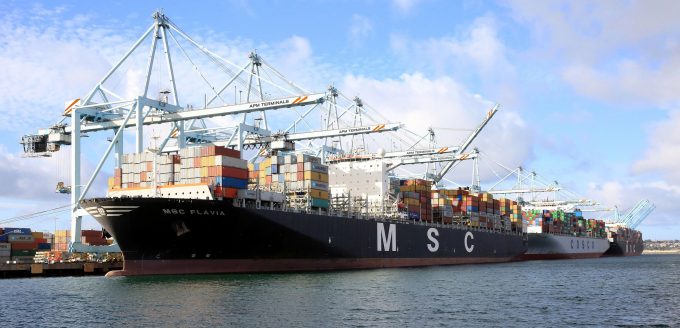Shipping disruption and e-commerce demand driving up airfreight rates
The start of the airline summer season this month is likely to hit airfreight rates ...

Container shipping lines operating on the transpacific trade, hoping pre-Chinese New Year gains in spot market eastbound rates would lead to higher 2017 annual contract rates, could be disappointed.
Delegates at this week’s TPM conference in Long Beach heardthat although there was an unexpected boost to spot rates levels in the early part of the year, the market has subsequently began to soften, and on the sidelines of the conference talk was of annual rate levels that will do well to better $1,000 per 40ft.
Tan Hua Joo, executive consultant at Alphaliner, said sentiment on the trade was likely to take precedence over economics.
“The carriers managed some increases in spot rates, but the levels are not as high as they had hoped for, and over the next three to four weeks, as new alliances and new carriers come into operation, the spot market will be further weakened.
“I’m afraid that what is going to drive pricing at the moment is no longer demand and supply, but carrier behaviour, and for that reason I am negative on short-term rate developments. Any increase in annual contracts over last year will, unfortunately, be quite small.”
He explained that unlike the Asia-Europe trade, which has gained some measure of stability after two years of sclerotic volatility, largely due to the fact that from April, it will be controlled by just the three new alliances, with just one independent service – Zim’s Asia-Mediterranean loop. The rest of the capacity will be in the hands of the 2M, Ocean and THE alliances.
In contrast, Mr Tan showed, some 18% of transpacific capacity will be operated by independent carriers, which mean different dynamics propelling the trade – particularly in terms of what happens to the spot market.
According to the latest SeaIntel maritime analysis, carriers would need to secure year-on-year contract rate increases of 37% to the US west coast if they are to return rates to historical levels.
It says: “It is very clear that pricing agreed during contract negotiations in spring 2016 became completely detached from any previous relationships, and shippers managed to obtain rate levels significantly below what was indicated by the subsequent spot developments.
“The reason for this is likely the highly negative market sentiment in early spring 2016, when spot rates on some key trades were literally approaching zero.
“It is also clear, in hindsight, that this negative sentiment led to the introduction of rate levels on the transpacific which were clearly unwarranted,” it adds.
That won’t stop some shippers trying to repeat their negotiating feats of last year, however.
The Loadstar understands that one transpacific shipper, which secured an all-in rate of $850 per 40ft this time last year, was aiming to secure the same rate this year.
While a 37% increase on that may be unattainable for carriers, observers suggested that a 10% increase – equating to just $85 – should be a reasonable target.
Hapag Lloyd chief executive Rolf Habben Jansen said: “The transpacific trade must improve because rates were at a disastrous level and there is a basic consensus the levels of last year simply are not sustainable.”
Comment on this article